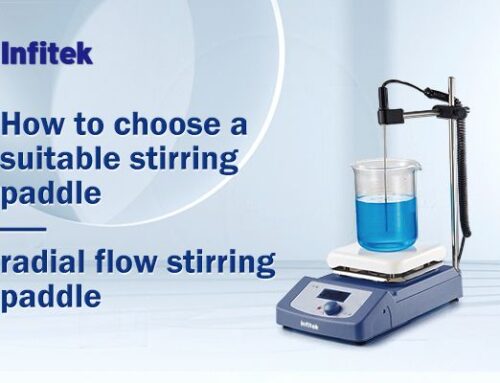How to Select a Lab Freezer or Refrigerator
Lab freezers and lab refrigerators have received increasing attention in the press because of their importance is storing vaccines between the time of manufacture and being injected into a patient’s arm. As reported in Scientific American, lab freezers and lab refrigerators play a role in the “COVID Cold Chain.” This post explains how to select a lab freezer or refrigerator for coronavirus vaccines and other temperature-critical products.
The Difference Between Lab Units and Household Units
A lab freezer or refrigerator is designed and constructed to meet much stricter standards than typically found in household or commercial units. Vaccines, other pharmaceuticals, blood and plasma, for example, must be stored within tight temperature ranges to avoid loss of potency or spoilage.
Important Points to Keep in Mind
Proper storage of these and other temperature-sensitive products is strictly governed by organizations such as the Food and Drug Administration (FDA) and agencies such as the Centers for Disease Control and Prevention.
Improper storage of vaccines, for example, results in loss of potency, represents a tremendous cost in both lost product and the expense of re-vaccination.
Storing valuable or irreplaceable biological specimens is another example where proper temperature control is critical.
The cost (and potential penalties) involved due to improper storage in lab freezers and lab refrigerators provides ample justification for their higher cost.
That’s why temperature control and daily record-keeping are so important.
Lab Freezer and Refrigerator Categories
Lab freezers can be categorized in many ways, but we’ll start with temperature capability. This is followed by other selection guidelines.
While most Lab freezers usually operate from -10⁰C to -25⁰C there are exceptions based on models. Low-temperature freezers again depending on models are available for temperatures to – 25⁰, -30⁰ and -40⁰C.
The need for ultra-low temperature models for storing COVID-19 vaccines is often mentioned in the press, exemplified by the Scientific American article cited above. Again, depending on models ultra-low temperature freezers can be set from -40⁰ to -86⁰C.
A suggestion: If you are buying a lab freezer choose one that delivers the temperature you need because the lower the temperature the more power it requires.
Lab refrigerators typically operate from 1⁰C to 10⁰C.
Five Selection Guidelines for Lab Freezers and Refrigerators
In the following sections we’ll take a look at points to consider when purchasing a lab freezer or refrigerator.
1. Temperature Recording and Temperature Alarms
The CDC recommends twice daily manually checking and recording the temperature of lab freezers and refrigerators. While this may seem redundant in view of alarming systems, automated devices may malfunction. It has happened.
Alarming is an absolutely critical feature when storing valuable vaccines, pharmaceutical and biologicals. Even the most basic lab refrigerator and lab freezer can be fitted with optional digital thermometer alarms consisting of an internal sensor inserted in a glycol bottle and connected by wire passing over the hinge-side door gasket or through optional sensor access ports to an external control and display module.
The purpose of the glycol is to “insulate” the sensor from responding to quick temperature fluctuations such as when the door is opened.
The next step up is a built-in digital audio and visual high/low temperature alarm with remote alarm contacts to alert personnel elsewhere in the facility.
Optional USB temperature data loggers with built-in alarms are available to automatically record interior temperatures at user-programmable intervals using NIST traceable probes. To read the results, simply plug the USB flash drive into a computer and transfer data to a PC for review and archiving.
2. Determine your Capacity Requirements
It’s important to calculate the size of unit you’ll need as excess capacity not only results in a higher cost but can take up valuable space. As an example, the CDC suggests keeping a 60-day supply of vaccines on hand and ordering replacement stock on a 30-day cycle while keeping an eye on expiration dates.
3. Manual and Auto Defrost Lab Freezers and Refrigerators
There are important distinctions between manual and auto defrost units.
Auto-defrost units are generally favored by laboratories and pharmacies. Most models have fans that circulate chilled air throughout the unit to create a uniform internal temperature. Some models allow users to control the frequency and duration of the defrost cycle. Filling the unit with product or water bottles helps reduce temperature fluctuations due to compressor cycling and door openings.
Manual-defrost scientific refrigerators cool by circulating refrigerant through tubing in the walls. The internal temperature differential causes the cold air to circulate. Because there is no fan-forced air circulation in manual-defrost refrigerators they are favored for applications such as experiments in open containers where it is not permissible for product to dry out due to moving air.
Auto-defrost scientific freezers are preferred by most labs for convenience. They are self-maintaining and don’t require the availability of a second freezer during defrost cycles. Some auto-defrost freezers are equipped to provide user control over the defrost cycle.
Manual-defrost scientific freezers work on the same principal as manual-defrost refrigerators. Ice buildup on interior walls and on the condenser must be removed on a planned basis that includes providing alternative freezer space for the contents during the defrosting operations.
4. What About Combination Lab Refrigerator/Freezers?
As a general rule, a stand-alone scientific refrigerator and stand-alone scientific freezer will maintain better temperature control than a combination refrigerator/freezer with a single condenser. This should be considered when tight temperature control is important.
BUT: Limited space availability and the need to provide both refrigeration and freezing capability suggest a combination scientific refrigerator-freezer unit. Here is a brief description of three design configurations:
The best temperature control is offered by a combination lab refrigerator/freezer where each compartment has its own compressor, thermostat, and external door. This type of combo model is recommended when storing products that are highly temperature sensitive.
A lower-cost option for storing less temperature-sensitive products is a lab freezer/refrigerator with only one compressor for both compartments. The two compartments have separate external doors and may have separate temperature controls. Because cold air from the freezer compartment flows via a vent into the refrigerator compartment the temperatures of the two compartments are not completely independent.
When space is tight, consider an under counter or countertop fridge/freezer unit. These are generally configured as a refrigerator compartment that contains an internal freezer compartment with a door. In this case the freezer compartment does not have its own thermostat.
5. Where to Place Your Lab Freezer and Refrigerator
This is a take-off on measure twice, cut once – the mantra of professional carpenters. Or on the guy who built a boat in the basement to find out it wouldn’t fit through the door.
Here are considerations to keep in mind when purchasing scientific refrigerators and freezers:
Locating the unit. Be certain that enough physical space is available and that there is proximity to a power outlet – dedicated is preferable; extension cords are not recommended.
Under counter vs. freestanding units. Built-in under-counter units do not require space at the sides and back because they are vented from the front. Free standing units generally require space at the sides and top for air circulation. Free standing units are finished on the sides as well as the top and front. Depending on models, built-in units may or may not be finished on the sides and top.
Side, top and rear clearances for full size units. Manufacturers’ specifications indicate these requirements. Some designs, for example, require a few inches while other can be snugged against side cabinets and rear walls.
Will the under counter lab freezer or refrigerator fit in existing or planned casework? If so is there enough clearance to allow the equipment to function properly? Allow enough space for the unit to be moved for servicing.
Local environment. Avoid placing refrigerators and freezers near heating ducts or in areas of direct sunlight.
Optional Lab Freezer Equipment
Standard and optional equipment available for scientific refrigerators and freezers varies depending on the manufacturer and model. We’ve commented on various temperature sensing, monitoring and alarming systems, some of which are classified as optional.
Other options to consider include:
Casters or levelers vs. legs
Door locks and other security systems
Insulated glass vs. solid doors
Additional shelving
Drawers and baskets
Reversed door hinges
Stainless steel vs. painted exteriors and/or interiors
Sensor ports to access internal scientific equipment
Internal electrical outlets
Special Feature Lab Freezers and Refrigerators
Flammable and/or explosion-proof units may be called for to address serious safety issues. Flammable units are designed so that volatile substances cannot be ignited by an internal stray spark such as from a compressor or lighting. If the atmosphere in the lab itself is volatile an explosion-proof laboratory refrigerator or freezer must be specified. This topic should be discussed with the scientists at BioEvoPeak




Get Social